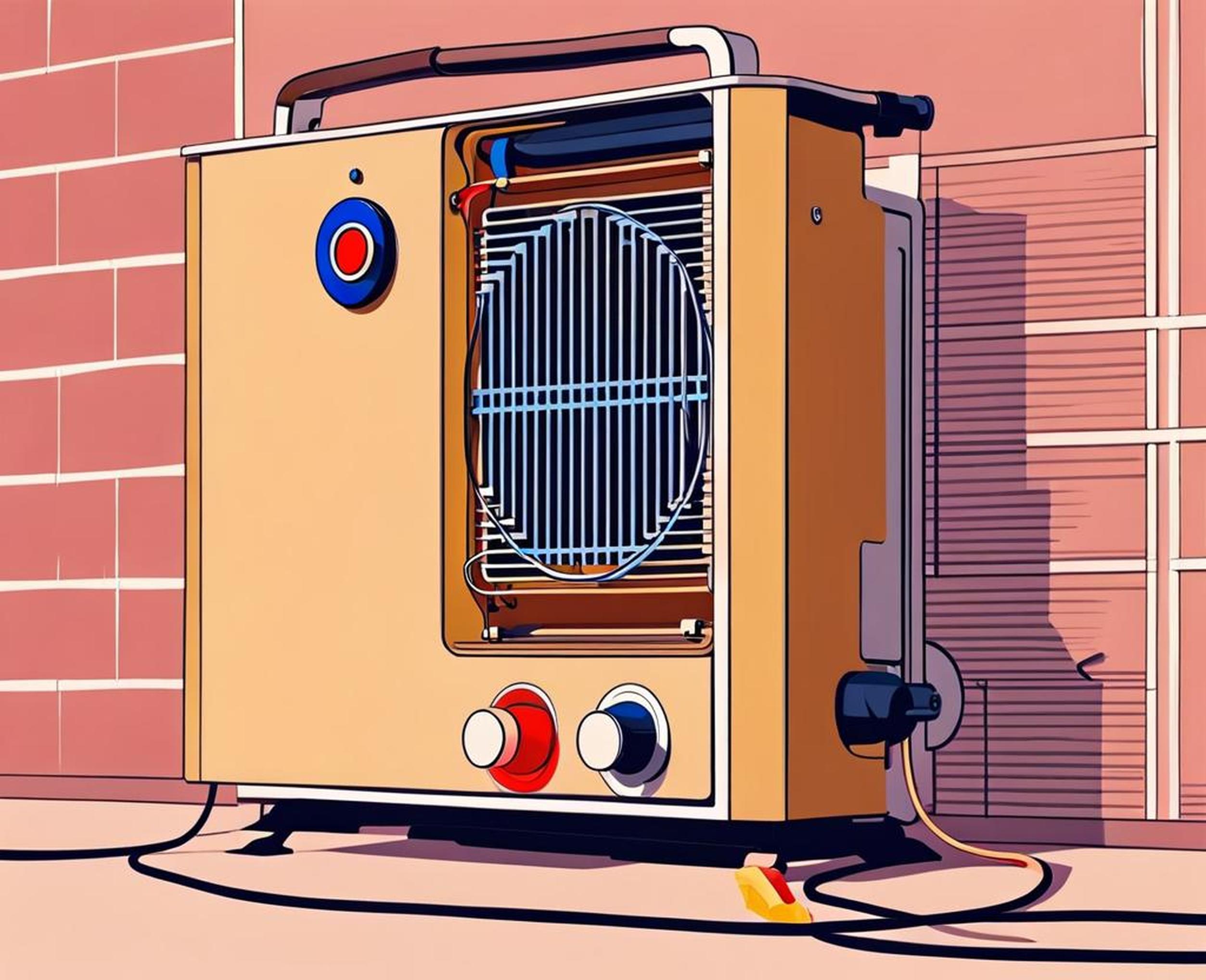Having an electric heater that turns on but fails to produce any warmth can be extremely frustrating. But don’t worry – in most cases, this issue can be quickly diagnosed and resolved on your own without having to call in a professional.
Check Fuse Box For Blown Fuse
One of the most likely culprits for an electric heater failure is a blown fuse in your electrical system. Fuses are safety devices designed to break the circuit if there is a power surge or short, protecting your electrical system from damage.
To check for a blown fuse:
- Locate the fuse box, usually found in basements, garages, utility rooms, or closets.
- Open the metal door and examine the fuses. Look for any that appear blackened or burnt.
- Use a fuse puller tool to remove and inspect each fuse.
- If you find a blown fuse, replace it with a fuse of the same amperage.
Replacing the fuse may immediately restore power and functionality to your electric heater. Fuses commonly blow due to an overloaded circuit, a power surge, or old wiring in need of replacement.

Inspect Circuit Breaker For Tripping
Like a fuse, a tripped circuit breaker is another interruption of power that can cause an electric heater to blow cold air when turned on.
Circuit breakers are designed to trip and automatically shut off power to parts of the electrical system when there is too much current flowing. This protects the wiring from damage caused by overloads.
To check for a tripped circuit breaker:
- Find the main circuit breaker panel, usually located in the basement, garage, or utility area.
- Look for the switch that corresponds to the heater circuit to be in the “OFF” position.
- Flip the switch fully to the “OFF” position, then back to the “ON” position to reset it.
Resetting the tripped breaker may resolve the issue. If it trips again, there may be a short circuit or a high-power device overloading the circuit.
Test The Thermostat
The thermostat controls power to the heating element, directing it to turn on once the set temperature is lower than the ambient room temperature. A faulty thermostat can prevent an electric heater from producing any heat.
To test if the thermostat is defective:
- Set the temperature to maximum heat.
- Use a multimeter on the thermostat terminals to check for continuity.
- If there is no continuity, the thermostat should be replaced.
A loose, inaccurate, or dead thermostat will not properly signal the heating element to activate. Replacing the thermostat yourself is an easy fix.
Examine Power Cord and Internal Wiring
For an electric heater to operate, electricity must flow through intact wires from the power source to the heating element. Any interruption in this flow can prevent heat production.
Thoroughly inspect the power cord for damage. Look for tearing, loose plugs, frays, cracks, or burn marks. Using a voltmeter, check for continuity. If the cord is damaged, replace it before using the heater.
You may also need to open up the heater to access internal wiring. Check connections for looseness and wires for deterioration. Faulty wiring inside the unit can cause operation failure and poses a serious fire hazard.
Check for Blockages in Vents
Blocked air vents or clogged filters can cause the interior of an electric heater to overheat quickly. This triggers the high-limit thermostat to automatically shut off power to prevent fire hazards.
Clean filters according to manufacturer directions, generally once per heating season. Use a soft brush or compressed air to remove debris and lint from vents.
Ensuring vents are unobstructed will allow proper airflow and prevent premature automatic power shutoffs.
Inspect Heating Element
At the heart of the electric heater is the heating element that converts electrical current into radiant heat. If it’s defective, the result is an inoperable unit blowing cold air.
With the unit unplugged, examine the visible heating element for any cracks or discoloration. Use a multimeter to check the element’s resistance. Abnormal readings indicate a faulty element that requires replacement.
Ensure power is disconnected before testing the heating element. Seek professional assistance if you are uncertain during inspection or repairs.
Reset Safety Shutoff Features
Many electric heaters have high-limit auto shutoffs designed to deactivate the heater when overheating is detected. This is an important safety feature but can also be triggered prematurely.
Unplug the heater and allow 15 minutes for the auto shutoff mechanism to cool and reset. When powered back on, monitor closely. If the safety trips again quickly, overheating is likely occurring.
Determine if blockages, dirty filters, or a failing fan motor are causing overheating. Repairs may be needed before the heater can operate safely.
When To Call A Professional
While many overheating and electrical issues can be DIY repairs, it’s critical to call in a professional electrician if you have any uncertainty about the required troubleshooting or repairs.
Seeking expert assistance is particularly important if the problem persists after troubleshooting, you need to access internal wiring, or you lack the proper tools and multimeter for diagnosis.
Electricians have the advanced technical skills, specialized equipment, and certifications to safely perform complex electrical repairs. This provides peace of mind and can prevent costly damages or dangerous mishaps.
Troubleshooting and repairing an electric heater that’s turning on but failing to heat doesn’t have to be a frustrating process. In many cases, the problem can be quickly identified and resolved on your own.
Check for interrupted electrical supply from blown fuses or tripped breakers. Test components like the thermostat and heating element. Inspect wires and vents. And don’t hesitate to call in a professional if needed.
Following these tips can get your electric heater safely up and running again, restoring warmth to your space.
